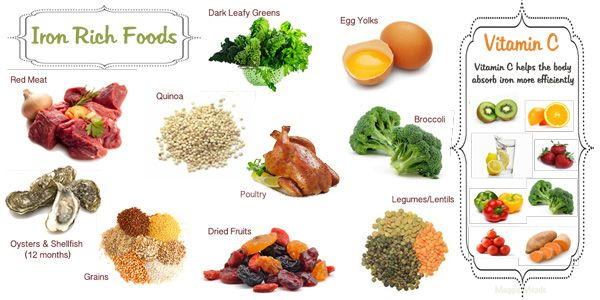Iron Deficiency Anemia
Iron helps transport oxygen throughout the body. This is important because the oxygen from the red blood cells are critical for healthy growth and development in the child’s brain, muscles, and energy levels.
Iron-Deficiency Anemia is when there is not enough iron in the body. As a result the body is not able to make enough red blood cells.
Typically through a blood test. If iron-deficiency anemia is found, additional tests may be needed. The test is routinely done at 9 months and 2 years.
Most kids need 11 mg a day and teenage girls need 15mg.
Anemia is usually treated through and iron-rich diet and iron supplements. In very rare cases children will need a blood transfusion.
What are the symptoms of Anemia?
- Sometimes no symptoms are present
- Pale or yellowish skin
- Weakness and little energy
- Poor appetite
- Dizziness or fast heart beat
- Irritability
- Desire to eat non-food items such as, paint, ice, dirt or chalk
- Cold hands and feet
- Sore or swollen tongue
Who is at risk for Anemia?
- Infants-those who don’t get enough iron from breastmilk or formula
- Children-need extra iron for growth spurts
- Teenage Girls-since they lose blood through menstruation, they are at greater risk
- Vegetarians-since they don’t eat meat, they are at greater risk if they don’t eat other foods that are rich in iron (such as soy, beans, and iron fortified cereals)
How can I prevent anemia?
- Limit cow’s milk in older children to no more than 2 cups a day since it can cause anemia
- Exclusively breastfeeding infants after 6 months of age should be given iron-rich foods along with breastmilk
- Eat iron-rich foods with Vitamin C to increase the absorption of iron
What are iron-rich foods?
- Iron-enriched cereals, pastas, grains and rice
- Leafy greens such as: kale, spinach, broccoli, collard greens
- Legumes (beans) such as: black-eyed peas, green peas, pinto beans, lentils, and chickpeas
- Eggs
- Tofu
- Meats such as: beef, pork, chicken, lamb, turkey, duck, fish, shellfish, and organ meats. Especially red meat




